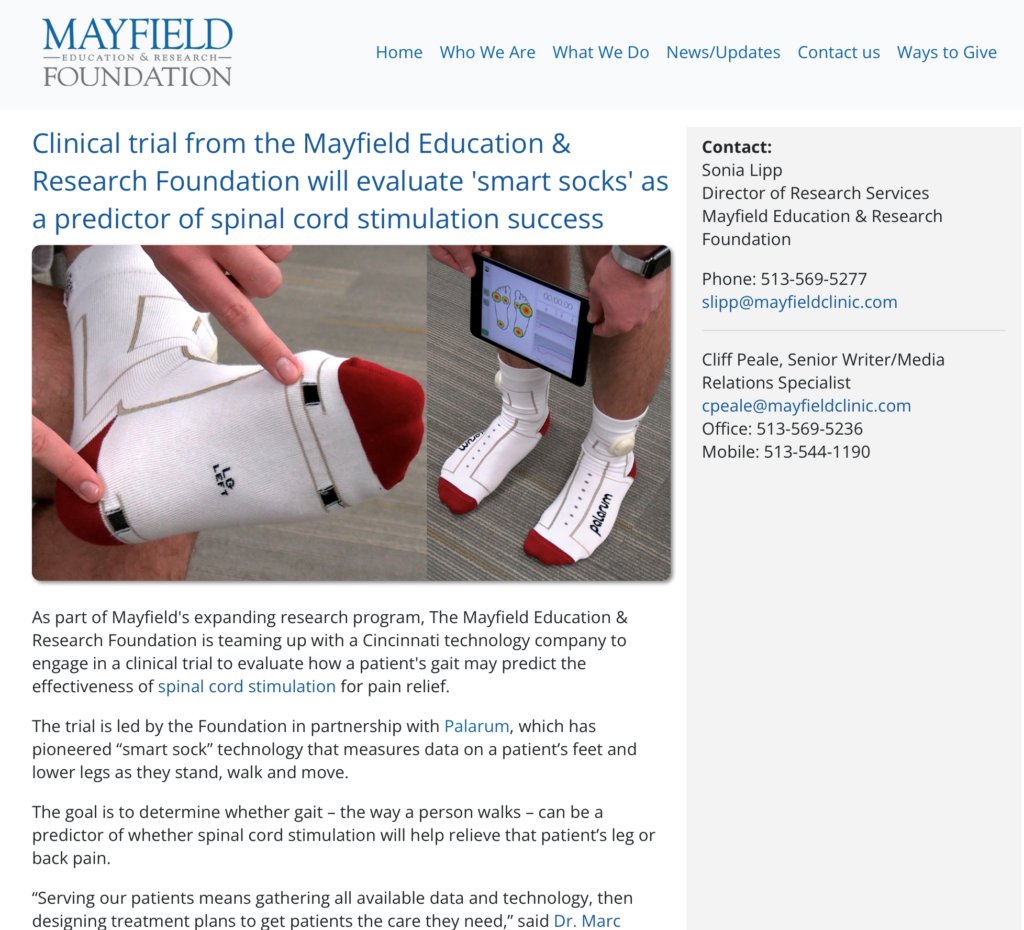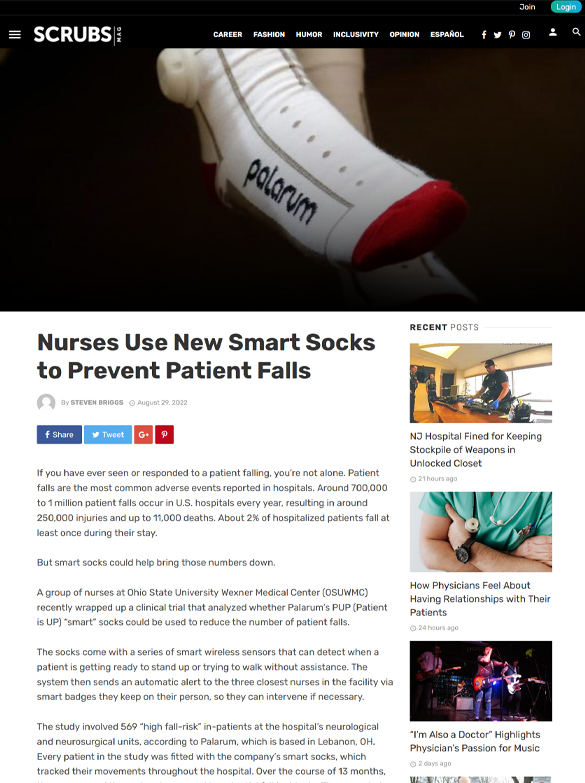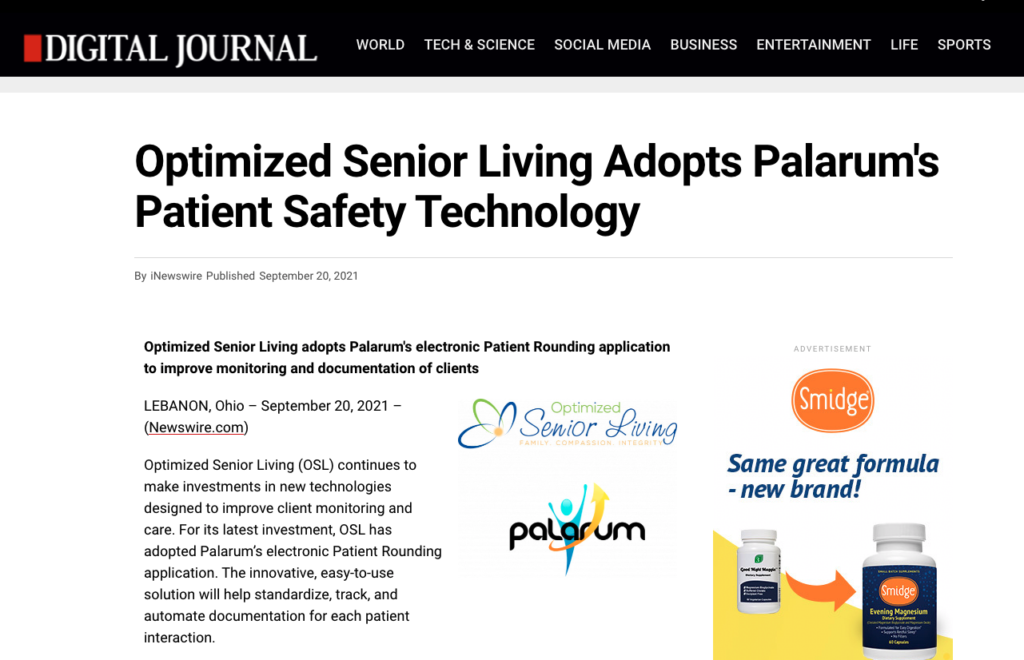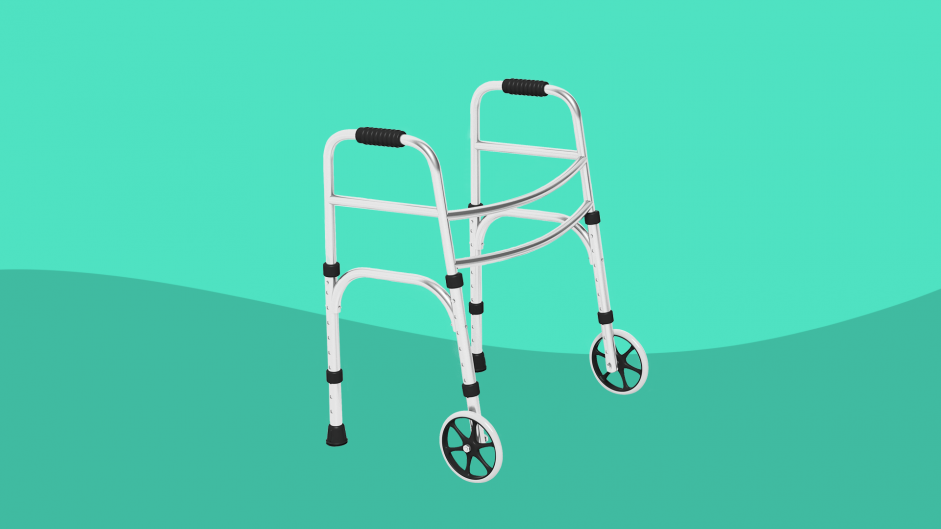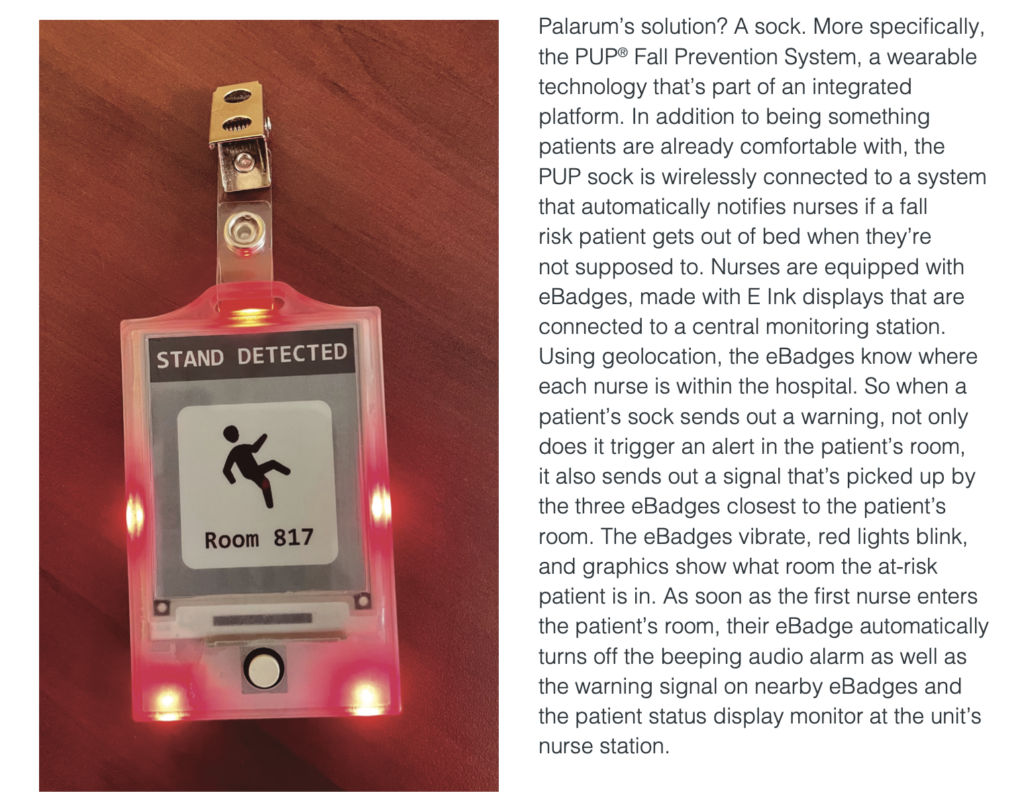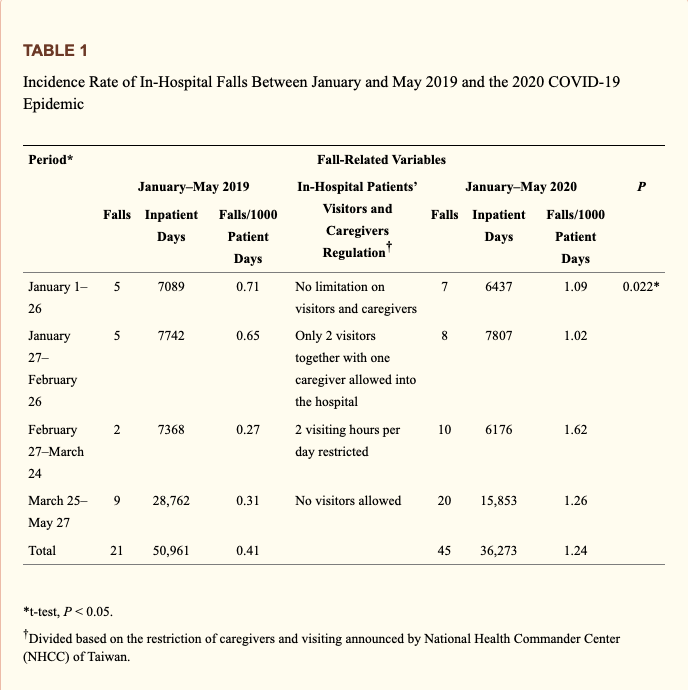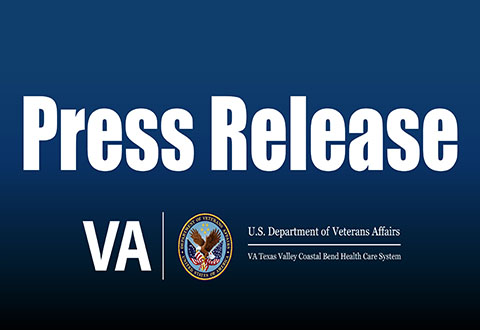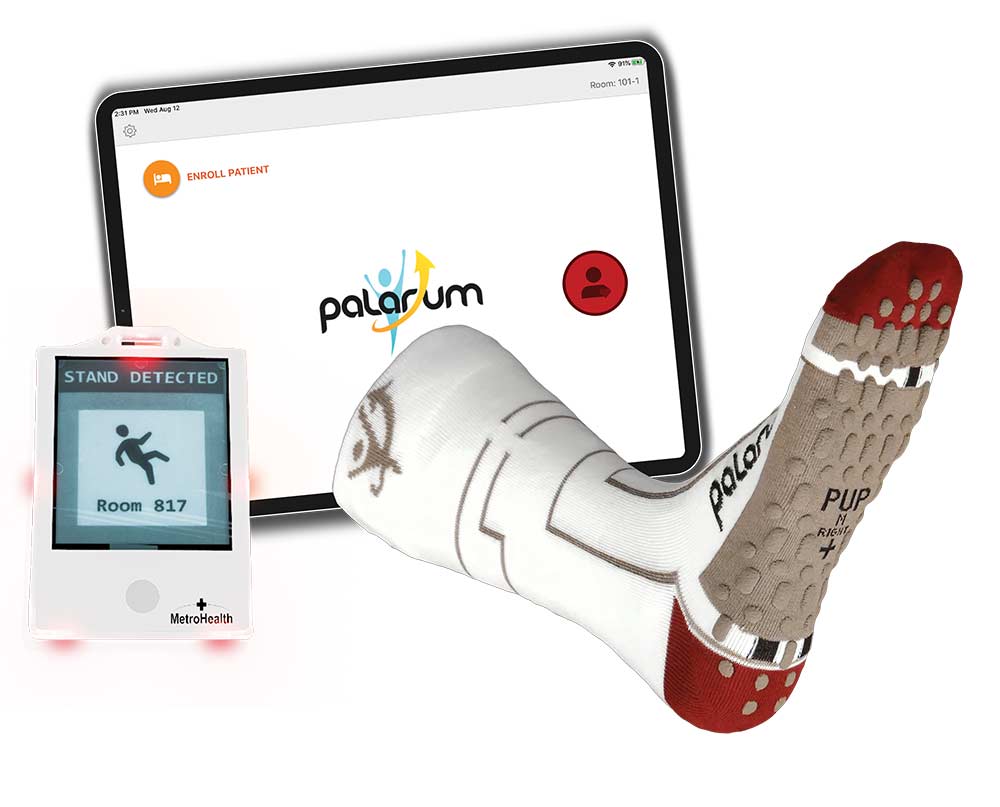Journal of Gerontological Nursing Publishes Palarum’s Clinical Trial Results
PUP® (Patient Is Up) Smart Sock Technology Prevents Falls Among Hospital Patients With High Fall Risk in a Clinical Trial and Observational Study…
Optimized Senior Living Adopts Palarum’s Patient Safety Technology
Optimized Senior Living adopts Palarum’s electronic Patient Rounding application to improve monitoring and documentation of clients…
Fall Prevention for Seniors
In an average year, 3 million older Americans go to the ER after a fall. Learn about fall risk assessment and strategies for fall prevention in seniors…
E-Ink features Palarum in ‘Digital Paper for Smart Credentialing’
One company blazing a trail is Palarum, an Ohio-based startup that’s taking the concept of a security badge in new directions. While traditional ID badges are geared toward protecting facilities from intruders, Palarum is focused on protecting hospital patients from injury…
Covid’s Potential Impact on Falls
Higher Fall Rate of Admitted Patients During the Ongoing COVID-19 Epidemic: Is It Coincidence or Not?
Evaluation of a Patient-Centered Fall-Prevention Tool Kit to Reduce Falls and Injuries
Falls represent a leading cause of preventable injury in hospitals and a frequently reported serious adverse event. Hospitalization is associated with an increased risk for falls and serious injuries including hip fractures, subdural hematomas, or even death…
Palarum Announces US Veterans Affairs to Evaluate Use of ‘Smart Patient Sock’ to Reduce Patient Falls
The U.S. Department of Veteran Affairs (VA) and Palarum, LLC, announced that they have entered into a Cooperative Research and Development Agreement Program (CRADA) to evaluate Palarum’s innovative e-wearable technology which…
PUP® Smart Socks
AN INNOVATIVE E-TEXTILE TECHNOLOGY SOLUTION TO PREVENT FALLS Within acute care settings, falls persist as one of the most common and potentially devastatingcomplications of healthcare. The Agency for Healthcare Research and Quality estimates that asmany as 1 million hospitalized individuals fall each year, corresponding to between three and fivefalls per 1,000 patient days.1

